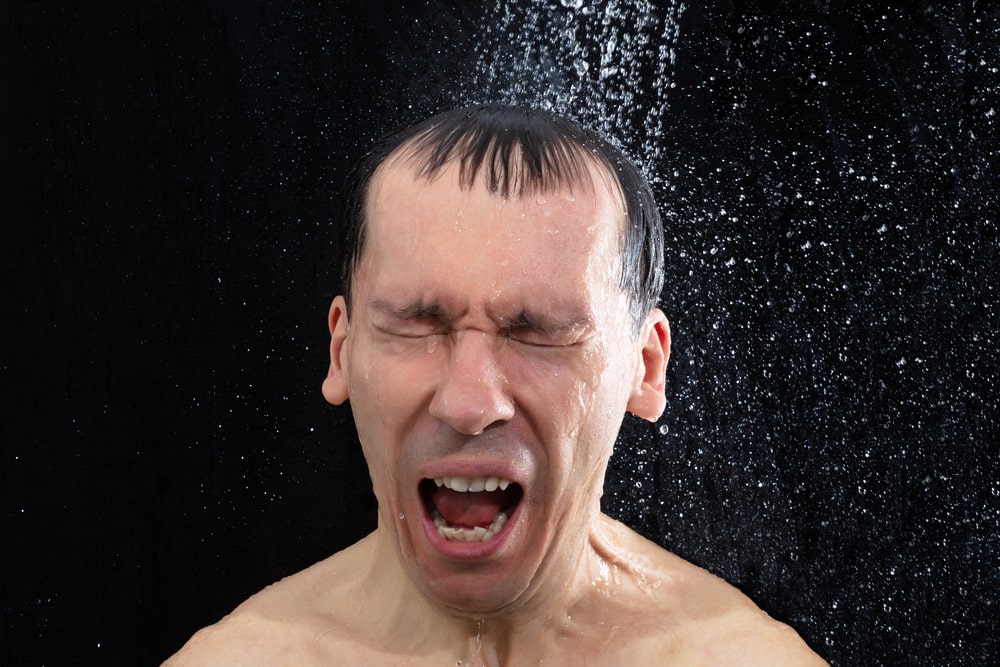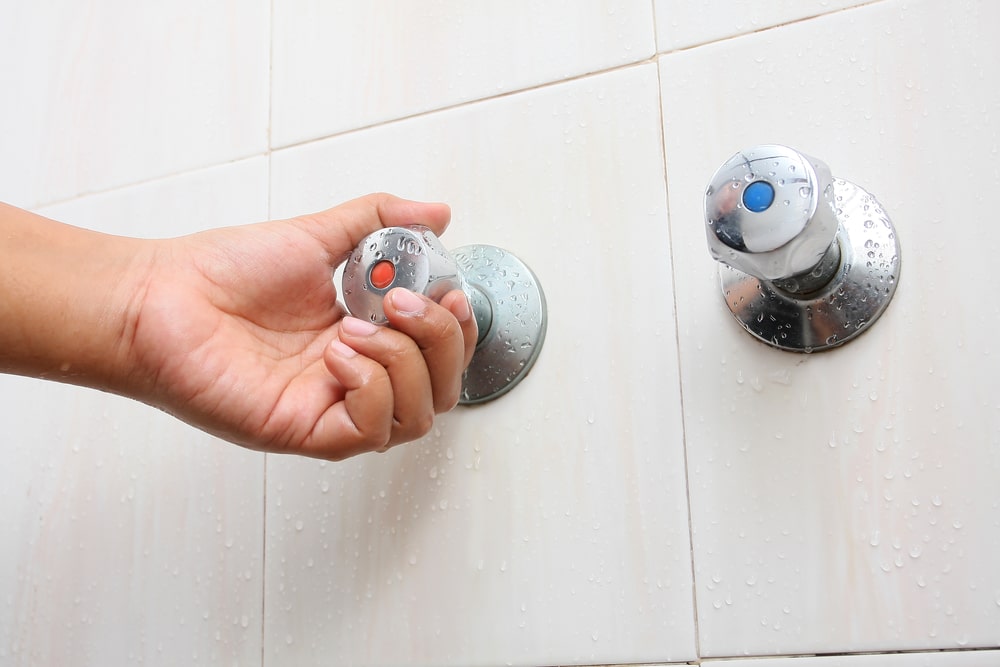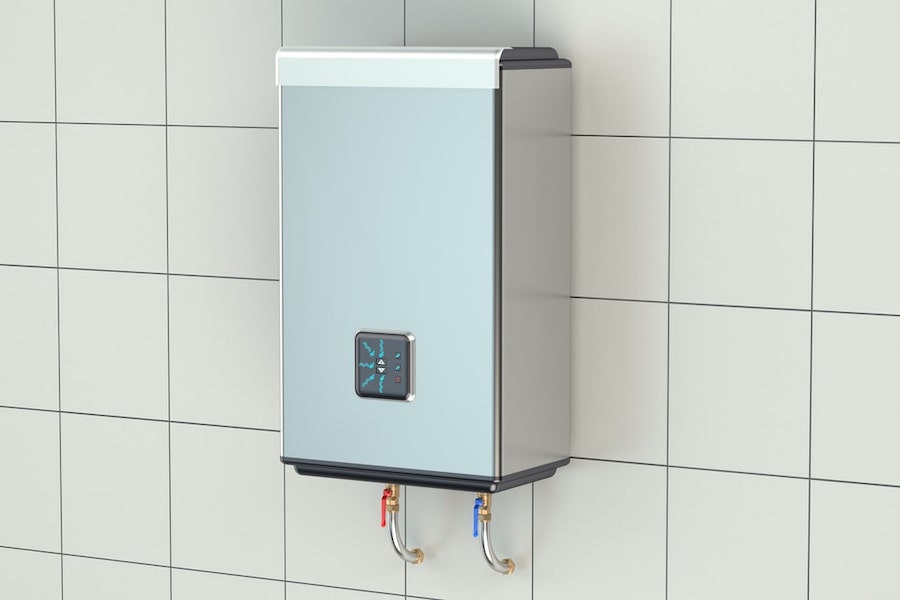If you’ve recently switched to a tankless water heater or are thinking about it, you’ve probably heard a lot about its advantages. This type of heater is more compact, energy-efficient and environment-friendly.
Unlike conventional water heaters that keep a reservoir of water to meet your demand, these models heat the water directly through the pipes and transfer it to the faucets. So, you don’t have to wait for hot water anymore.
But no system is flawless, and demand-type heaters are no exception. This post will dip into some of the most frequent tankless water heater problems and teach you how to deal with them.
When using a tankless water heater, you’re likely to face these issues:
- Inferior water flow.
- Ignition failure.
- Cold water.
- Overheated water.
- Cold water sandwich.
- Exhaust obstruction message.
- Mineral accumulation.
Don’t worry! In this post, we will tell you how to fix these common problems one by one.
1. Poor Water Pressure
Among other tankless water heater problems, poor water pressure is one of the most common issues. And it usually happens along with intermittent loss of water.
When you can’t get enough water flowing through the pipe, the most basic routines, such as taking a bath and washing the dishes, turn into a nightmare.
When it comes to tankless water heaters, insufficient water pressure is usually linked to low gas pressure. When the water heater lacks enough energy to heat a large amount of water, it pumps less water, aiming to meet your desired temperature.
However, there may be other causes as well.
What’s the Solution?
First of all, you should check the gas valve, and then contact the gas supplier company and ask if there are any gas pressure issues.
If that was not the case, the problem might be with the pipes. Call a plumber to check for any potential leaks, sediment buildup or clogged water pipes.
The third solution is to check the main water valves. Sometimes, the shut-off valve remains half-closed. So all you need is to find its location and turn it counterclockwise to open it again.
You can usually find it somewhere in the basement, underground box or the outer sides of the walls.
2. Ignition Problems
If you’ve ever had a propane tankless water heater, you probably know how annoying a “no-ignition” message is. It doesn’t matter how long you wait for it. Sometimes the heater won’t turn on to warm the water.
Why is your tankless water heater not getting hot? When this happens, you can usually find the root of the problem in a non-sufficient supply of water, gas, or electricity. So, here’s what you should do.
What’s the Solution?
Before anything, you should check your fuel source. Ensure your propane tank isn’t empty, your gas valves are not blocked and the heater is not disconnected from the outlet. If you haven’t found the problem, look for the water valves and ensure they’re fully open.
If you still fail to locate the issue with all these attempts, it may be the ignition pack. In this case, you should call a professional plumber and let them resolve the issue.
3. No Hot Water

As you may know, tankless water heaters are designed to provide instant hot water. This means they start working as soon as you turn the faucet on.
Now, imagine a scenario where you’re taking a shower, the washing machine is running on hot-water mode, and your roommate has started to wash the dishes. When this happens, the heater has to manage a large amount of water all at once, and obviously, it can’t keep up with the demand.
What’s the Solution?
As a first attempt to solve this problem, you should reduce the amount of running water and use only one appliance. If this doesn’t take care of the issue, try the following tips.
Sometimes the problem has nothing to do with the water heater. If not insulated, water pipes can freeze in the winter and, as a result, cool the heated water down. When this happens, using wall insulation, pipe wraps, faucet covers and insulation jackets for water heaters may help.
Rotate the tap head as far as you can. Some water heaters won’t start to work unless they have enough water flow.
The cold-water problem can be a sign of a flame failure problem. So, it would help if you examined the flame rod and followed the solutions of the previous section.
Make sure there are no obstructions in the duct, the burner is clean and there are no problems with the gas supply.
4. Water Is Too Hot
Most tankless water heaters feature a heat exchanger sensor that controls the temperature and prevents it from overheating the water. Still, a few factors can interrupt its functionality:
- You’re not using the right sort of gas.
- There’s plaque buildup inside the heat exchanger that makes some spots hotter than others.
- The sensor is dirty, broken or loosely mounted.
- You haven’t cleaned the inlet filter for a while.
- The water passageway, faucet or showerhead is clogged.
Also, notice that sometimes the problem lies in the wrong heating level. It doesn’t matter if you’ve intentionally set the temperature on high or struck your hand on the thermostat by accident.
What’s the Solution?
The solution to this problem depends on the cause. First, you should reduce the temperature. If the problem continues, clean the filter, flush and descale the exchanger. Lastly, call your contractor to see if there’s a problem with the sensor.
5. Temperature Fluctuations

Also known as the “cold water sandwich,” this dilemma is one of the most common tankless water heater problems.
Let’s say your roommate has just come out of the shower, and you start running a bath. In this situation, you’re very likely to face a cold/hot dilemma. At first, you’ll have a short burst of hot water. Then, it gets chilly, and after a few moments, the hot water’s back.
This condition may make you uneasy, but it’s quite normal. Because in general, the water heater stops running when the tap goes off, and it won’t reignite immediately.
Compared to traditional heaters, tankless heaters work way quicker, but they still need a little time to heat the water.
As you can see, this is not an actual fault since it’s a part of their working mechanism. Simply understanding how your heater works should help you to deal with it.
What’s the Solution?
When facing a hot-cold-hot dilemma, there are two things you can do:
- Preferably, don’t take showers one after another. But if you have no other choice, leave the tap open for a few seconds so that the ignitor flames up and starts to warm up.
- Consider a second unit so you can use it on rainy days. (This solution is especially helpful for bigger households. Because they’re more likely to use water taps back-to-back.)
6. Mineral Buildup
This one is not limited to tankless water heater problems, because it’s actually the water that causes the mess. So, regardless of what type of water heater you’re using, there can always be something growing on your unit.
These buildups usually include calcium and magnesium, two inorganic minerals found in most water supplies in American states. Florida, New Mexico, Arizona, Wisconsin and Indiana are regions with higher amounts of minerals.
So, if you’re living in regions with mineral-heavy/hard water, you shouldn’t overlook this problem. Because it can decrease the longevity of your water heater or mitigate its efficiency. Moreover, it can damage other water-related appliances such as dishwashers and washing machines.
What’s the Solution?
Fortunately, this one has the most straightforward solution among tankless water heater problems.
First, you should find the symptoms and, accordingly, fix the mess.
The first symptom refers to water odors. If you smell a garbage-like odor through your faucet and you’re sure it’s not the case with cold water, it’s derived from the water heater.
Since the rotten-egg smell is usually associated with bacteria buildup—rather than mineral accumulation—you should be fast to troubleshoot this type of issue. Try flushing the unit with vinegar, powdered citric acid, lemon juice or factory-made descaling solutions.
If you can’t trust DIY methods, it’s good to ask a professional to service the system for you. Once done, install a scale detector and a scale filter to prevent the situation from reoccurring.
Another sign of mineral buildup is discoloration. If you noticed the water is a little cloudy or has a yellow-brown shade of color, again, you should consider descaling your system. But to make sure it derives from the heater, open the hot water and let it flow for a minute.
7. The Block Exhaustion Notification
To continue the combustion process, a heater needs access to enough fresh air. Besides, it needs to vent the gases to the outdoors to keep the heat. So, if there’s a blockage in your exhaust channel, it won’t keep running.
Since most versions of tankless heaters come with an LCD screen to display troubles, you’ll receive a “blocked exhaustion” alert when the route blocks.
As annoying as it may be, this message will help you figure out what’s going on with your unit and try to troubleshoot the issue. Here’s what you should do.
What’s the Solution?
First of all, check for the potential objects that can obstruct the duct and its openings. These can include a bird’s nest, a buildup of creosote or debris. You may also find leaves and tree branches that dropped through the stack.
Then, you should ensure your air pipes are firmly installed and haven’t come out of their place. If you find no issues, reread the installation manual to see if there was an installation error on your part.
Your last course of action should be checking for splits and apertures on the pipe. If you discovered any, you could arrange for a plumber to replace it. Or, if possible, tape it up with insulation tapes or bands.
FAQs About Tankless Water Heater Problems
What Happens If You Don’t Flush Your Tankless Water Heater?
If you don’t flush your tankless water heater, over time, minerals will accumulate in the system. They can disrupt its heating capacity, so you’ll either have cold or overheated water.
What Degree Should a Tankless Water Heater Be Set to?
You should set the tankless water heater to 140 degrees Fahrenheit. It’s the ideal temperature and the default setting of the manufacturer.
Yet, some factors may affect the temperature setting. A household with infants, for example, shouldn’t let the temperatures exceed 120 degrees, because 140-degree water can burn a kid’s skin in just five seconds.
Why Does My Tankless Water Heater Go Cold?
When your tankless water heater goes cold, it can have several causes:
- Wrong-sized gas line.
- Improperly installed heat exchanger.
- Ventilation lines that are too long.
- Corrosion in pipes.
- A crossover of hot and cold water supplies.
What Is the Most Common Problem With Water Heaters?
Here are the most common problems with water heaters:
- Too hot or too cold water temperature.
- Condensation buildup.
- Leakage from the bottom or top.
- Long heating process.
- Low water pressure.
- Strange noises.
- Smelly or rusty water.
- Faulty pilots or burners.
- Faulty thermostats.
Can You Run Out of Hot Water With a Tankless Water Heater?
You can’t run out of hot water with a tankless water heater, because there’s no storage of hot water to be finished. Yet, that’s not to say you won’t have hot water from time to time.
Tankless water heaters work on-demand. But if you overload it with too many tasks, it can’t meet the demand, and as a result, you no longer have hot water.
Unlike traditional heaters, in this scenario, you don’t have to wait for hot water. All you have to do is shut off one of the taps or appliances, and then you’re good to go.
How Long Does a Tankless Water Heater Last?
Tankless water heaters tend to last more than 20 years, while traditional ones have a lifespan of roughly 10 years. One reason is that these heaters are less prone to corrosion. Besides, most tankless heaters come with replaceable components, which can expand their durability. Yet, it’s good to know that life expectancy can vary depending on the quality of the heater, the amount of usage and your maintenance.
Is It Worth Switching to a Tankless Water Heater?
Switching to a tankless water heater is worth it in the long-term. A tankless water heater costs more than a storage water heater at the beginning, but it saves a significant amount in your energy bills.
Other than the costs, a tankless water heater provides you with many benefits over a standard version. It has a longer lifespan, takes less space and produces instant hot water.
Conclusion
Whether you’re a starter or a longtime user of tankless water heaters, you’re likely to see some errors from the unit. This can be so frustrating, as you’ve paid a great deal of money to invest in an efficient system, and you think it’s letting you down.
But sometimes the issues are not severe, and you can resolve them with a few measures. Here, we help you to understand the most common gas/electric tankless water heater problems along with their potential solutions.

